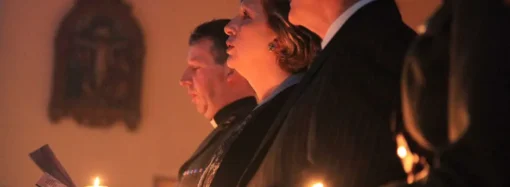According to the 20th century theologian Georges Florovsky, Protestant historiography is one of “decay”.
In the traditional Protestant view (by no means shared by all Protestants today), Christianity was in its purest form in its beginning stages, and over the centuries experienced a gradual distortion until its “Reformation” in the 16th century.
Because of the influence of this Protestant view of history on Western schools, most students typically do not hear much about the period of the 800-year history following the Fall of the Roman Empire known as the Middle Ages.
And because they are kept in ignorance of the Middle Ages—while nevertheless having the gall to classify it as a period of “ignorance”—they typically think of the Renaissance as limited to something that happened in Italy beginning in the 14th century.
But according to many modern scholars, that wasn’t the first Renaissance in the history of the West. Rather, the first revival of learning and culture took place in the 8th and 9th centuries and, according to historian Kenneth Clark, helped Western Civilization survive “by the skin of its teeth.”
The first Renaissance was spearheaded by the Holy Roman Emperor Charlemagne (742-814) and his successors, and is thus known as the “Carolingian Renaissance”. Its main contributions included improving the knowledge of Latin throughout Western Europe and the copying and preservation of many classical texts.
Latin was the language of the Western version of the Bible (the Vulgate), the Church Fathers (the early theologians of Christianity), and classical Roman literature. Thus, becoming a literate person at that time required a knowledge of Latin.
However, after centuries of barbarian rule, knowledge of proper Latin was in a deplorable state in the late 8th century. Most of the clergy—those most likely to receive formal education—were barely literate. Famously, St. Boniface had written to Pope Zachary about witnessing a baptism performed by a priest who used the formula “Baptizo te in nomine Patria, et Filia, et Spiritu Sancta,” which he considered invalid. (The correct Latin rendering is “Baptizo te in nomine Patris, et Filii, et Spiritus Sancti.”)
Charlemagne responded by first drawing the greatest scholars of the time to his Palace School in Aachen, and then issuing a series of ordinances, or “capitularies”, stipulating that all bishoprics and monasteries have schools at which they taught the rudiments of proper Latin grammar (along with basic arithmetic, singing, and musical notation). It was the job of Charlemagne’s traveling representatives—the missi dominici—to ensure that the mandated curriculum was being satisfactorily carried out.
The second major contribution of the Carolingian Renaissance was the tremendous increase in the copying of ancient manuscripts. Due to the decline in copying and literacy during the 7th and 8th centuries, access to the great works of the past had become extremely limited by the beginning of Charlemagne’s reign. Many had even been lost to history.
Therefore, to prevent further loss of the West’s intellectual heritage, and increase learning throughout the empire, Charlemagne instituted a massive program of copying and correcting ancient texts. The copying was aided by the development of a much more legible form of writing known as the “Carolingian Minuscule,” which standardized the practice of using capital letters and spaces between words.
The debt we owe to this work of literary preservation cannot be overestimated, according to Clark: “Our whole knowledge of ancient literature is due to the collecting and copying that began under Charlemagne, and almost any classical text that survived until the eighth century has survived till today.”
As in the early Middle Ages, Western Civilization finds its future threatened once again. A new set of barbarians, who have no taste for the intellectual contributions of the past, have populated the West. Indeed, as philosopher Alasdair MacIntyre has said, “they have already been governing us for quite some time.”
Like Charlemagne, we find ourselves in the midst of a dark age.
Things are strangely different now, though. Unlike Charlemagne’s time, we have unprecedented access to the great works of history, but people aren’t reading them, and our schools aren’t teaching them.
We have innumerable curricula designed to help us learn the world’s—and our own—languages and grammar. But we aren’t using them effectively, as demonstrated by the large percentages of high school graduates who cannot write proficiently and/or are “functionally illiterate”.
We have unprecedented access to institutions of higher learning. But the education provided by the majority of these institutions is confused, scattered, without an intellectual compass.
It is time for a new renaissance in the West. What its particular program and contribution will be is still unclear. But we hope, with its inauguration, that Western Civilization can once again survive “by the skin of our teeth.”
—
















Leave a Comment
Your email address will not be published. Required fields are marked with *